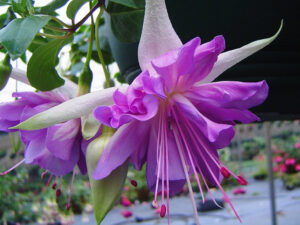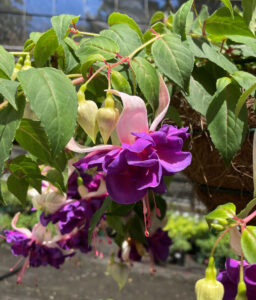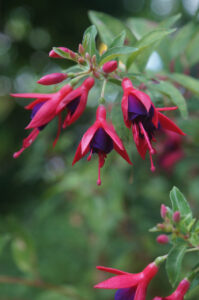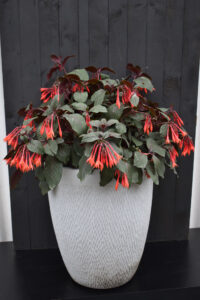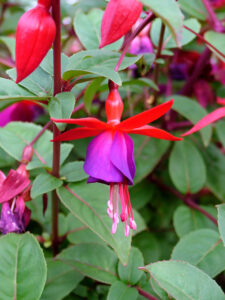
Appealing and popular any way you say it
By John Fitzsimmons
One of the most perennially popular garden plant genus worldwide has a name that is just as widely mis-pronounced, mostly by English speakers. However, that doesn’t seem to affect its widespread and continuing appeal.
Fuchsias are among the most universally popular and instantly recognised garden plants. English speakers learn early on to call them ‘fyu-sha’ leading to the mis-spelling of the genus as ‘Fuschia.’ However, the agreed history is that they were brought to international attention around 1700 by the French monk Charles Plumier. He brought the first plants back to Europe from the Caribbean’s second largest island, then called Hispaniola, immediately south east of the region’s largest island Cuba. As a result of the European struggle for control of the New World between France and Spain, the island was later divided into Haiti and the Dominican Republic.


Plumier named his newly found genus Fuchsia (in his Nova Plantarum Americanum published in 1703) in honour of the German academic Leonhart Fuchs, hence Fuchsia – correctly pronounced ‘fook-sya’. Fuchs, born in Bavaria in 1501 became a physician and Professor of Medicine at the University of Tübingen in (now Baden Wurttemberg) southern Germany. Because at that time many medicines and remedies were herbal, Fuchs also studied plants extensively, resulting in him becoming one of the ‘fathers of botany.’ His herb gardens at Tübingen ultimately became the foundation of the Botanic Garden at Eberhard Karls University of Tübingen, recognised as a major centre for the study of plant biology.
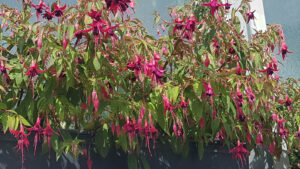
Ironically, even though his birthplace now holds an annual Fuchsia festival, Fuchs never actually saw the plants named in his honour which was bestowed 137 years after his death.
Plumier first introduced and described Fuchsia coccinea whose vivid pink-purple colour inspired the organic dye ‘fuchsine’ patented by French chemist Verguin in 1859; this was subsequently renamed Magenta to celebrate a French military victory near Milan in Italy.
It has been written that F. coccinea arrived at England’s Kew Gardens in 1788, possibly via a Captain Firth. There are also references to a similar species, F. magellanica, arriving around the same time. Both species reportedly hybridised readily. Certainly, fuchsias had proliferated throughout the UK by the 1800s with many hybrids produced to broaden garden appeal. By the mid-1800s more than 500 cultivars had been described. Fuchsias were commonly grown as a cut flower up until World War I, when food production took precedence over ornamentals in the UK.

Between the two world wars nearly 100 Fuchsia cultivars were shipped to the US west coast which spawned a new wave in interest and breeding.
Today the genus is recognised as having a native range from South America north to Mexico and the Caribbean, plus New Zealand. It has successfully been widely introduced to other parts of the worlds including the UK and Ireland, the USA, Europe, east Africa, southern Australia, Sri Lanka, Malaysia and Indonesia.
There are hundreds of species and thousands of hybrids. In Australia, examples of Fuchsia are widely available through national supply channels and specialist propagators.
The genus mostly consists of small to medium shrubs and some trees. Of the familiar smaller shrub varieties their versatility, in-ground, in pots and even trailing types in baskets, greatly extends their visual appeal. Yes, some maintenance improves success with Fuchsias, however, it is mostly locating them in shade to semi-shade and providing a moist free draining root zone.
So, even if the pronunciation might have divisions, the popularity of this remarkable genus remains strong and universal.
Main photo: Fuchsia ‘Parliament’ with its pretty double flowers (Image: Weald View Gardens)
